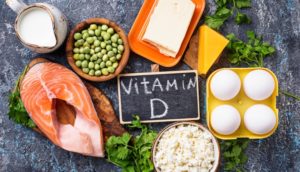When you think of carcinogens, what do you think of? Perhaps you picture the black tar coating a chain-smoker’s lungs, but since you don’t smoke, you figure you’re safe and move on—think again. As we know, substances that cause cancer can be found in more than just tobacco products.
Carcinogens could be in a product you use, a substance in the air, or a chemical in foods and drinks you consume. Just because you are exposed doesn’t mean you’ll get cancer. Your odds of getting cancer depends on how much and for how long you’ve been exposed to specific carcinogens. Of course, your genes also play a factor.
What is radon gas?
Radon gas occurs naturally and can be found in any home, but what is radon gas, and where does it come from? When uranium and radium in the soil decay, the radon gas they produce seeps into a home, regardless of the age of the house. Invisible, radioactive particles from radon gas can damage your lungs and lead to lung cancer. An estimated 21,000 people in the U.S. die annually from lung cancer following radon exposure. Testing is the only way to discover radon in a home. DIY radon kits are available at your favorite retail/hardware store, but professional testing is recommended. The good news is that there is a mitigation process to decrease radon levels. Learn more about radon in Minnesota.
Acrylamide
The chemical acrylamide is used in some industrial processes. As a result, there are regulations to limit over-exposure to it for workers. However, did you know that acrylamide can also appear in some foods? Acrylamide is a byproduct when vegetables, such as potatoes, are heated to high temperatures. According to the National Cancer Institute (NIH), other sources of acrylamide in foods (in addition to potatoes) also include crackers, bread, cookies, breakfast cereals, canned black olives, prune juice, and coffee.
While further studies are needed to confirm the effects of acrylamide when it appears in foods, you can take steps now to avoid the risk. When making potatoes, for example, lessen your chances of ingesting acrylamide by preparing them to a light-tan color and avoid eating darker-brown pieces. If you love to crunch the crispiest, dark French fries, you may want to cut back. (Besides some foods, an even greater exposure to acrylamide is tobacco smoke, so it’s one more reason to stop smoking.)
Formaldehyde
You remodeled and redecorated your home and now the smell is bothersome—even giving you headaches or nausea. You may have installed products containing formaldehyde. Pressed-wood products and furniture are the main culprits of formaldehyde in the home. Inquire about the formaldehyde content before purchasing them. If you already have new items containing formaldehyde, air out the room(s) well and keep humidity low with A/C or a dehumidifier.
Processed/Red Meat
 The Mayo Clinic reports that eating a regular diet of red meat and processed meats (bacon, sausage, hot dogs, ham, deli/canned meats, jerky, etc.), brings a higher risk of colon cancer, heart disease, and early death. Processed meats that are high in saturated fat and sodium are often fermented, cured, salted, or smoked. Daily protein needed for most adults is about 5.5 ounces, so look for alternate sources of protein to include in your menus. Rather than red or processed meat, choose chicken or fish, eggs, or dairy to supplement the veggies, fruit, nuts, and whole grains in your diet. Eating processed foods occasionally is fine.
The Mayo Clinic reports that eating a regular diet of red meat and processed meats (bacon, sausage, hot dogs, ham, deli/canned meats, jerky, etc.), brings a higher risk of colon cancer, heart disease, and early death. Processed meats that are high in saturated fat and sodium are often fermented, cured, salted, or smoked. Daily protein needed for most adults is about 5.5 ounces, so look for alternate sources of protein to include in your menus. Rather than red or processed meat, choose chicken or fish, eggs, or dairy to supplement the veggies, fruit, nuts, and whole grains in your diet. Eating processed foods occasionally is fine.
In many of these cancer-causing carcinogens, moderation and awareness go a long way toward protecting your health and the health of your family and friends. Contact your family medicine provider if you have questions about cancer-causing carcinogens within your environment.



